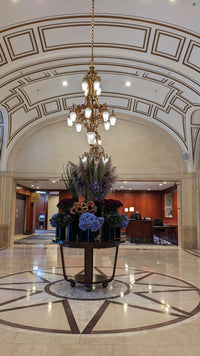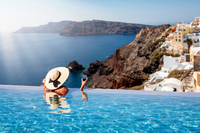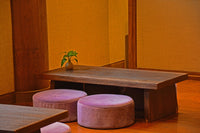Living in stressful societies makes people think more about their inner selves. Traveling is a way for people to get out of their routines, so it’s vital to ensure they can pause, relax, and care for themselves.
Whether focusing on health, safety issues, or mental health improvement, wellness is moving into a more personal direction. Several years ago, the words meditation and vacation sparked the idea of isolated yoga retreats. Nowadays, meditation is part of a typical vacation offering. The number of luxury hotels that integrate the concept of meditation and aroma zones rises year by year, offering guests multiple options to relieve stress, reduce anxiety, and make the most of their vacations.
Contagious Calmness
People who try meditation for the first time claim it helps them remain calm and centered. Scientific research shows that the benefits of mindfulness practices last up to ten months after the getaway. So, meditation has a long-lasting effect on the mind and body.
Currently, we observe the growth of the “new meditation generation.” The hospitality sector caters to its needs, changing wellness programs by adding more focus on meditation as a core part. A meditation practice has become a helpful tool for exploring one’s inner self in the privacy of the guest room, focusing the mind on a business trip, or calming tension from a tiresome family holiday.
Calmness is contagious. Modern luxury hotels extend their meditation sessions, offering clients the chance to unwind at any time of the day.
Meditation and Aroma Zones in Luxury Hotels
Whether designing a cozy meditation room or a grand luxury one, hoteliers pay close attention to design, decor, architecture, scent, and other elements. They understand that a meditation room is more than just a dedicated space; it is a place to revive energy, nurture mindfulness, and find peace. Thoughtfully curated elements help transform an ordinary room into a sanctuary for balance, stillness, and rejuvenation. Essential considerations include:
-
Location: Setting up a meditation area in the hotel starts with searching for a feel-good place where people will avoid distractions and maintain focus. Modern luxury hotels try various approaches to establishing meditation areas. These areas are not necessarily found inside the property. Quite often, clients can meditate on open-air terraces, specially equipped rooftop zones, etc. It is an especially valuable tip for hotels located close to nature.
-
Natural Materials: Meditation is a connection with the inner self and nature. That’s why it is necessary to choose organic materials to design a meditation space. Stone, wood, bamboo, and natural fibers perfectly complement such a space, providing grounding energy and ensuring closer connectivity with nature.
-
Lighting: A meditation area should have proper illumination to transmit its vibe to people. Warm and soft lighting helps cultivate a tranquil ambiance. It may come from various sources: strategically placed candles, LED-based lamps, or may have a natural origin.
-
Functional Furniture: A meditation space should be highly functional and aesthetically pleasing. Meditation areas usually have a minimalist design. Low-profile tables can hold candles and spiritual objects, while built-in cabinets, floating shelves, and hidden compartments keep the meditation necessities out of sight.
-
Comfortable Seating: Meditation sessions remain comfortable thanks to ergonomic seating arrangements, such as hammocks, supportive chairs, or plush floor cushions. You may even provide Japanese tatami mats.
-
Aroma and Sound Therapy: Scents and sounds have an equally significant impact on our emotions and feelings as the visual senses. Diffusers and scented candles are usual accessories in the meditation areas. They disperse beautiful scents that influence the mind’s ability to relax. Lavender, sandalwood, Roman chamomile, frankincense, and clary sage act as natural sedatives and can enhance the relaxed state of meditation.
By integrating these elements, hoteliers can cultivate luxury relaxation zones that support peace, self-care, and overall well-being.
The Role of Technology in Luxury Hotel Meditation Spaces
Hoteliers try to keep pace with modern, high-tech life by implementing innovative technologies into luxury hotel meditation areas. The primary concern is that these technologies shouldn’t disrupt the serene environment of meditation areas. Yet, a thoughtful establishment and usage of smart devices such as smart lighting, voice-activated control systems, app-controlled sound and scent scapes can optimize relaxation experiences.
Final Thoughts
Creating luxury meditation areas in hotels is a profound investment in your guests’ well-being and brand awareness. Thoughtful wellness design, innovative technology integration, and carefully chosen materials transform ordinary rooms into sanctuaries. Dream high, consider all the details, and present your hotel in the best light with the upscale area for cultivating mindfulness, balance, and rejuvenation.








